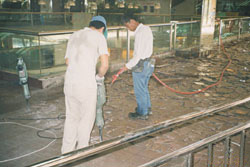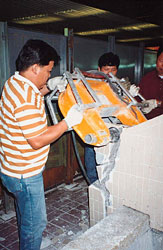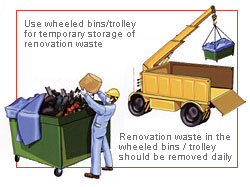|
Demolition
|
||||||||||||||||||||||||||||||||
|
|
||||||||||||||||||||||||||||||||
| Pollution Type | ||||||||||||||||||||||||||||||||
| Problem |
Dust
|
|||||||||||||||||||||||||||||||
| Relevant Env. Control | Air Pollution Control (Construction Dust) Regulation, Cap. 311R requires the relevant contractor to adopt effective dust control measures. | |||||||||||||||||||||||||||||||
| Practical Solutions |
|
|||||||||||||||||||||||||||||||
| Pollution Type | ||||||||||||||||||||||||||||||||
| Problem |
-
|
|||||||||||||||||||||||||||||||
| Relevant Env. Control | Under the Noise Control Ordinance, Cap. 400, use of powered mechanical equipment and noisy work is not allowed from 7pm to 7am on the next day or anytime on public holidays, including Sundays. | |||||||||||||||||||||||||||||||
| Practical Solutions |
|
|||||||||||||||||||||||||||||||
| Pollution Type | ||||||||||||||||||||||||||||||||
| Problem |
-
|
|||||||||||||||||||||||||||||||
| Relevant Env. Control | Under the Waste Disposal Ordinance, Cap. 354, it is prohibited to dump waste in public places or on Government land, or on private premises without the consent of the owner or occupier. | |||||||||||||||||||||||||||||||
| Practical Solutions |
|
|||||||||||||||||||||||||||||||




